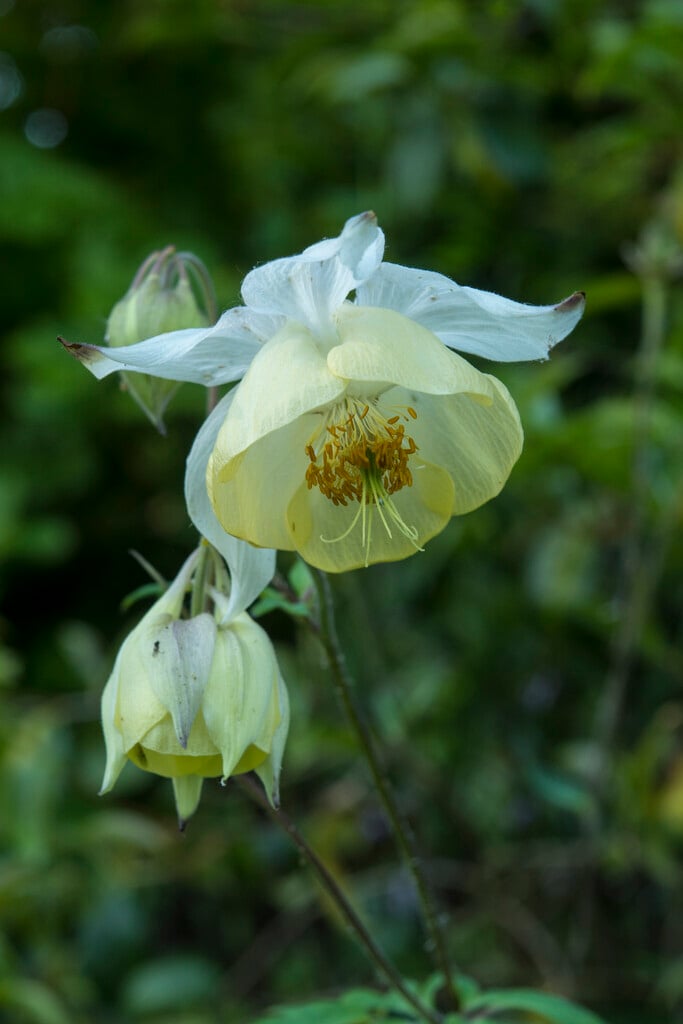Aquilegia fragrans
sweet-scented columbine
An upright perennial to around 40cm high, with deeply lobed and divided blue-green basal leaves. Slender stems bear scented, nodding flowers high above the foliage in spring; flowers have white spurs and sepals sometimes flushed with pale purple, and cream or pale yellow inner petals

Buy this plant
Size
Ultimate height
0.1–0.5 metresTime to ultimate height
2–5 yearsUltimate spread
0.1–0.5 metresGrowing conditions
Moisture
Moist but well–drainedpH
Acid, Alkaline, NeutralColour & scent
| Stem | Flower | Foliage | Fruit | |
| Spring | Cream Yellow | Blue Green | ||
|---|---|---|---|---|
| Summer | Blue Green | |||
| Autumn | ||||
| Winter |
Position
- Full sun
- Partial shade
Aspect
East–facing or South–facing or West–facing
Exposure
Exposed or Sheltered Hardiness
H5Botanical details
- Family
- Ranunculaceae
- Native to GB / Ireland
- No
- Foliage
- Deciduous
- Habit
- Clump forming
- Genus
Aquilegia are clump-forming herbaceous perennials with long-stalked, ternately divided basal leaves and erect, leafy stems bearing bell-shaped flowers with spreading, coloured sepals and petals with spurs, on branched stems
- Name status
Correct
How to grow
Cultivation
Thrives in rich, fertile, consistently moist soil in sun or part shade; dislikes heavy clay. See aquilegia cultivation for more detailed advice
Propagation
Propagate by seed, though self-seeded plants may not come true. Established plants can also be propagated by division in spring, but they dislike root disturbance and will be slow to recover
Suggested planting locations and garden types
- Cottage and informal garden
- Patio and container plants
- Wildflower meadow
- Wildlife gardens
- Flower borders and beds
- Underplanting of roses and shrubs
Pruning
Cut foliage back to the ground as it fades
Pests
May be susceptible to aphids, aquilegia gall midge, aquilegia sawfly and caterpillars
Diseases
May be susceptible to powdery mildews and aquilegia downy mildew
Get involved
The Royal Horticultural Society is the UK’s leading gardening charity. We aim to enrich everyone’s life through plants, and make the UK a greener and more beautiful place.